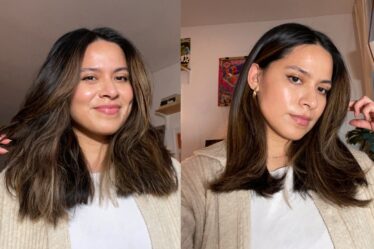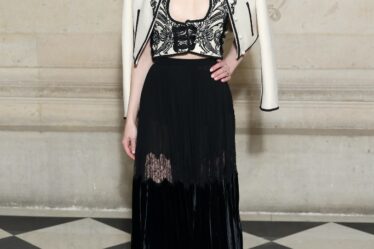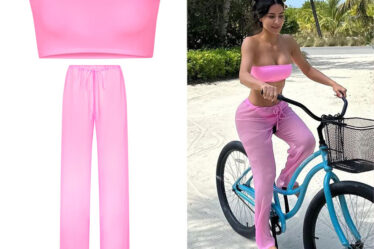Dress codes serve as the unspoken language of style in the intricate world of men’s fashion.
Dress codes are the invisible threads that weave together the fabric of social expectations, professional decorum, and personal expression.
For the discerning gentleman, understanding these codes is not merely about following rules—it’s about commanding respect, exuding confidence, and navigating social landscapes with sartorial finesse.
Imagine walking into a black-tie gala in a business suit, or worse, appearing at a board meeting in resort wear; the discomfort and embarrassment are palpable.
Yet, with a comprehensive grasp of dress codes, you transform from a fashion novice into a style virtuoso, effortlessly adapting to any occasion with precision and panache.
In this guide, we’ll unravel the mysteries of dress codes, from the most formal white-tie affairs to casual weekend ensembles.
We’ll explore the historical roots of each code, dissect their modern interpretations, and provide curated outfit ideas that exemplify the essence of each style.
By mastering these dress codes, you’ll look impeccable and feel empowered, knowing you’re dressed perfectly for every occasion.
Let’s begin our journey through the sartorial spectrum with a comprehensive overview of dress codes:
| Code | Formality | Key Garments | Occasions |
|---|---|---|---|
| White Tie | Highest | Tailcoat, white waistcoat, wing collar shirt | State dinners, royal events |
| Black Tie | Very High | Tuxedo, bow tie, cummerbund or waistcoat | Formal evening events, galas |
| Morning Dress | High (Daytime) | Morning coat, striped trousers, waistcoat | Weddings, Royal Ascot |
| Business Formal | High | Dark suit, tie, dress shoes | Important business meetings |
| Business Casual | Medium | Blazer, dress shirt, chinos | Everyday office wear |
| Smart Casual | Medium-Low | Sports jacket, open-collar shirt, dress trousers | Dinner parties, creative offices |
| Casual | Low | Jeans, t-shirt/polo, casual shoes | Weekend outings, informal gatherings |
| Resort Attire | Low (Location-specific) | Linen suit, light colours, loafers | Tropical holidays, beach clubs |
| Beach Formal | Medium-Low | Light suit, open-collar shirt, loafers | Beach weddings, upscale resorts |
White Tie Dress Code – The Pinnacle of Formality
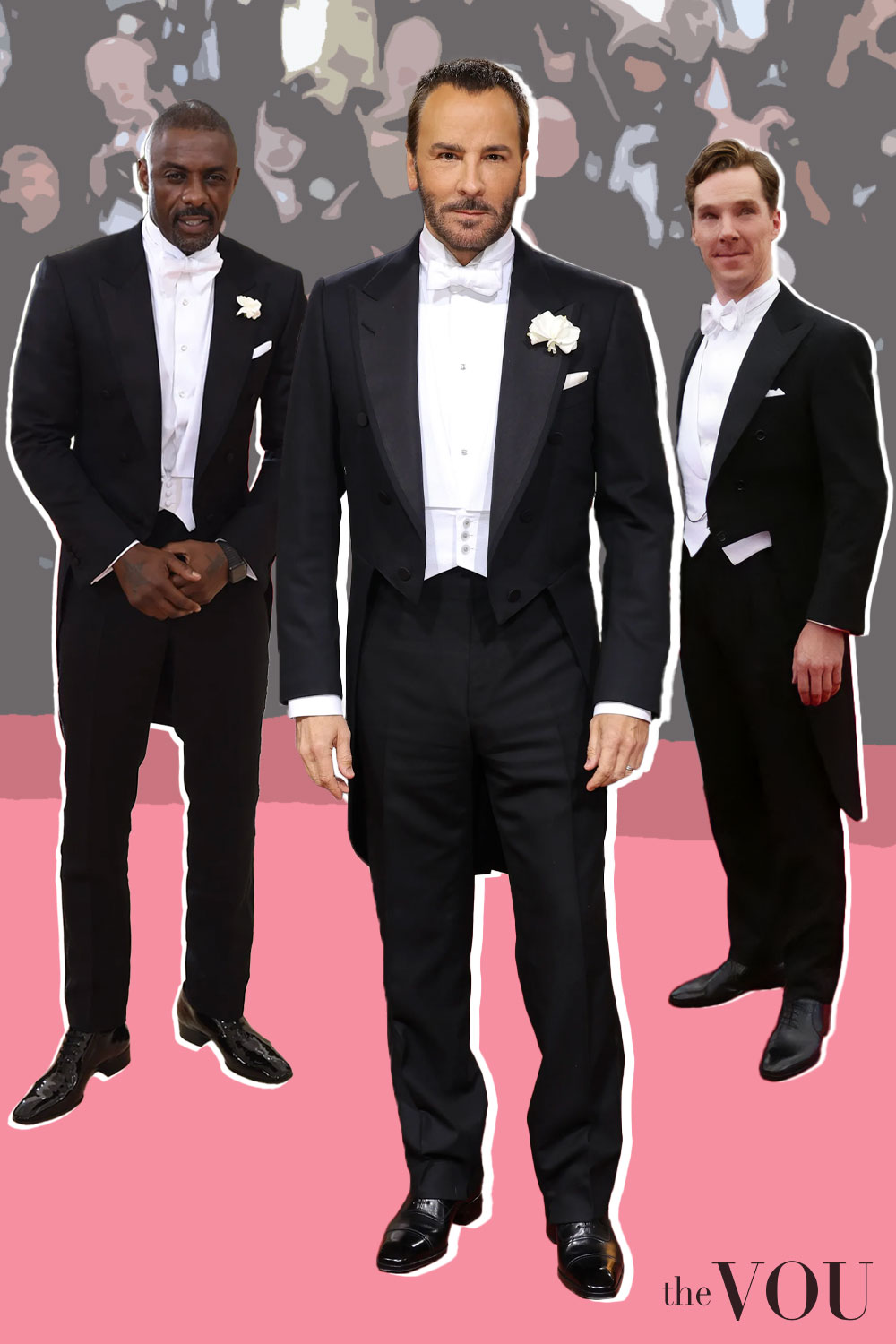
White tie, also known as “full evening dress” or “cravate blanche” in French, traces its roots to the early 19th century.
It evolved from the extravagant court dress of the 18th century, streamlined during the Regency period in England.
By the 1840s, the black tailcoat and white accessories became the standard for formal evening wear among the upper classes.
| Garment | Description | Styling Tips |
|---|---|---|
| Tailcoat | Black wool, silk-faced lapels | Single-breasted, no vents |
| Trousers | Black, high-waisted | Single satin stripe on outer seams |
| Waistcoat | White piqué or marcella | Low-cut, no buttons visible below the jacket |
| Shirt | White marcella or starched linen | Detachable wing collar, studded front |
| Bow Tie | White marcella or piqué | Self-tied, never pre-tied |
| Shoes | Black patent leather pumps | With grosgrain bows |
| Accessories | White gloves, top hat (optional) | Mother-of-pearl studs and cufflinks |
White Tie Outfit Idea
Dressed in a white tie, you don’t just attend an event—you command it, as your attire is a silent declaration of your understanding of tradition, respect for the occasion, and mastery of the sartorial arts.
Start with a perfectly tailored black wool barathea tailcoat, its silk-faced peaked lapels gleaming under the chandeliers.
Beneath, a crisp white marcella waistcoat peeks out, cut low to reveal only a glimpse above the jacket’s single button closure.
Your trousers, in matching black wool with a satin stripe along the outer seams, are held up by white moire braces, invisible beneath the layers.
A starched white linen shirt with a detachable wing collar stands at attention, secured with mother-of-pearl studs down the front pleats.
A hand-tied white marcella bow tie sits symmetrically around your neck, a testament to your attention to detail.
On your feet, black patent leather opera pumps with grosgrain bows reflect the light, while white kid gloves and a white silk pocket square add the final touches of refinement.
In your hand, should you choose, a black silk top hat completes this paragon of formal wear, ready to be doffed as you enter the royal presence.
This ensemble isn’t just clothing but an armour of etiquette, a uniform of the highest echelons of society.
Black Tie Dress Code – Elegant Evening Attire
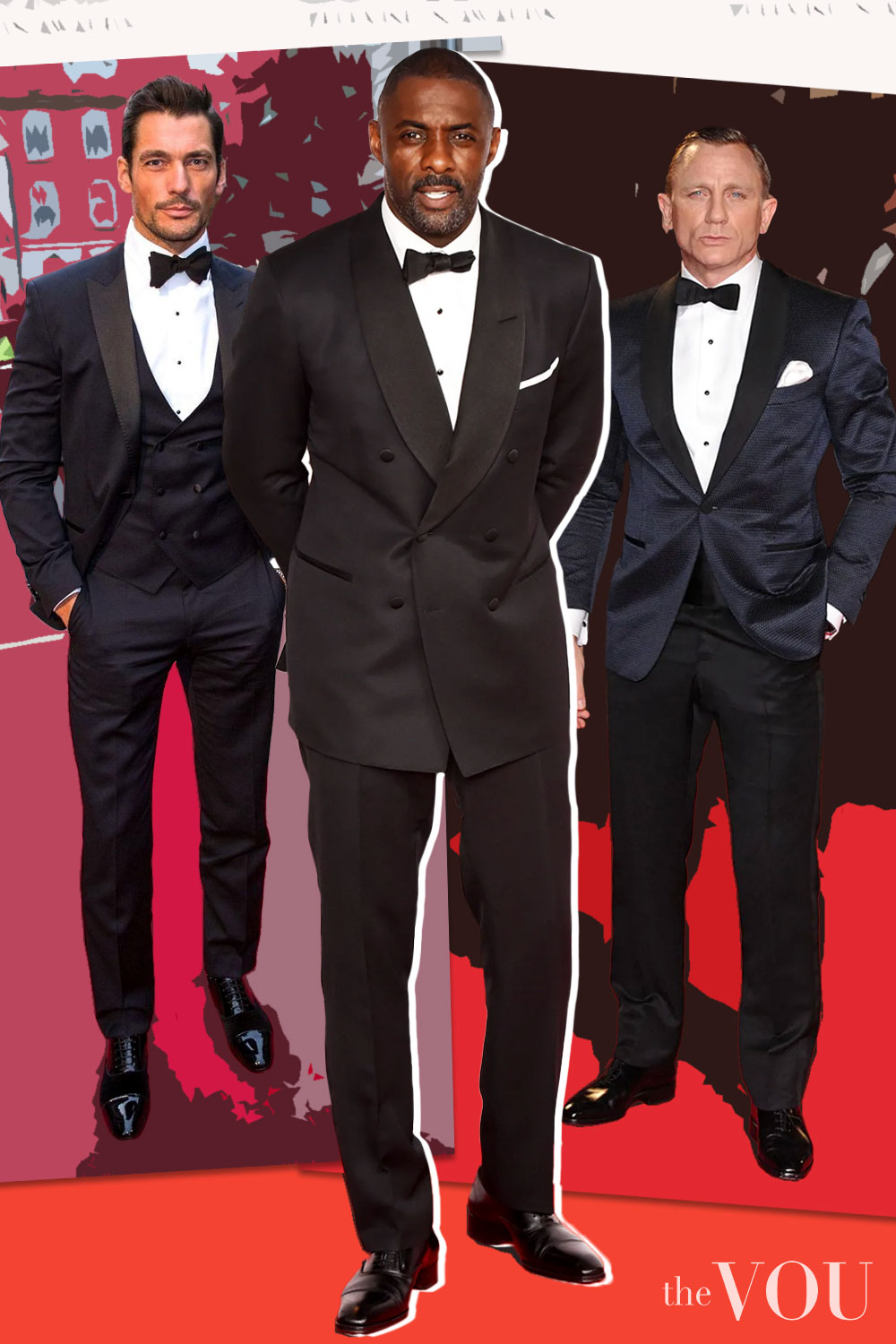
Black tie, a slightly less formal alternative to white tie, emerged in the late 19th century as a more relaxed option for dinners and social gatherings.
Its origins are often attributed to the Tuxedo Club in New York, where members adopted a tailless dinner jacket to rebel against the strict formality of tails.
Today, the black tie code is the gold standard for most formal evening events, balancing sophistication and wearability.
| Garment | Description | Styling Tips |
|---|---|---|
| Dinner Jacket | Black wool or midnight blue | Peaked or shawl lapel, single-breasted |
| Trousers | Matching jacket fabric | Single satin stripe on outer seams |
| Shirt | White dress shirt | Marcella or pleated bib, French cuffs |
| Bow Tie | Black silk | Self-tied, matching lapel facing |
| Waistcoat/Cummerbund | Black or matching jacket | Optional, never worn together |
| Shoes | Black patent leather Oxfords | Highly polished calfskin as an alternative |
| Accessories | Black silk socks, studs, cufflinks | Mother-of-pearl or onyx studs |
Black Tie Outfit Idea
Begin with a midnight blue mohair and wool blend dinner jacket, its shawl collar faced in black grosgrain silk.
The single-button closure and jetted pockets maintain a sleek silhouette, while the jacket’s rich hue appears deeper than black under artificial light.
Pair this with matching flat-front trousers, finished with a single black satin stripe along the outseams.
A white cotton poplin shirt with a marcella bib and collar provides a stark contrast. Its double cuffs are fastened with understated platinum and onyx cufflinks.
A hand-tied black silk barathea bow tie echoes the lapel facings around your neck.
For a streamlined look, opt for a black silk cummerbund instead of a waistcoat, ensuring it sits perfectly at your natural waist.
On your feet, black patent leather whole-cut Oxfords gleam, paired with fine gauge black silk over-the-calf socks.
A white linen pocket square, folded into a simple presidential fold, adds a touch of refinement without ostentation.
Complete the look with subtle accessories: a slim white gold watch with a black alligator strap and shirt studs in matching white gold and onyx.
This ensemble balances heritage, tradition, and contemporary trends, ensuring you stand out at the most illustrious black-tie events.
Morning Dress Code – Daytime Formal Elegance
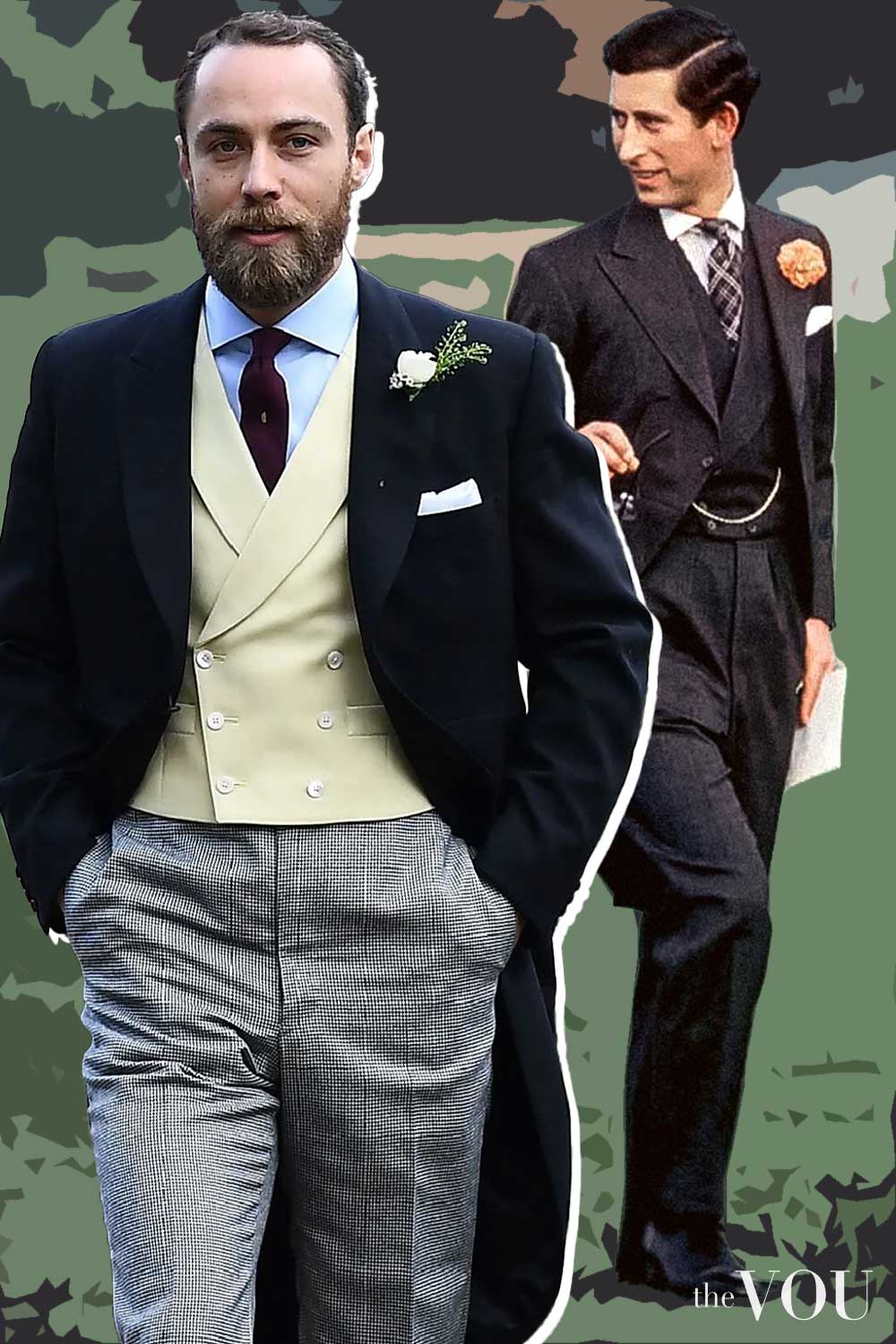
Morning dress, also known as ‘formal day dress’, originated in the 19th century as a more practical alternative to frock coats for daytime events.
It became popularised by the British upper classes and remains a staple of formal daytime occasions, particularly weddings and races like Royal Ascot.
| Garment | Description | Styling Tips |
|---|---|---|
| Morning Coat | Black or grey | Single-breasted, peaked lapels |
| Trousers | Grey striped | High-waisted, no turn-ups |
| Waistcoat | Single or double-breasted | Buff, light grey, or powder blue |
| Shirt | White | Turndown collar, double cuffs |
| Tie | Silk | Subdued patterns or solid colours |
| Shoes | Black Oxford | Highly polished |
| Accessories | Top hat, pocket square | Grey or black hat, white or cream square |
Morning Dress Outfit Idea
Begin with a perfectly tailored black barathea morning coat. Its single-breasted cut and peaked lapels create a distinguished silhouette. The coat’s tails should fall just below the knee, maintaining the classic proportions.
Pair this with high-waisted grey cashmere striped trousers. The trousers’ subtle sheen complements the coat’s matte finish. The stripes should be black and grey, providing a classic contrast against the coat.
Underneath, opt for a double-breasted waistcoat in pale duck egg blue silk. This adds a touch of refined personality while adhering to tradition. Ensure it’s cut high enough to show no gap between the waistcoat and trousers when standing.
Your shirt should be crisp white cotton poplin with a subtle herringbone weave, sporting a classic turndown collar and double cuffs. Choose a silk tie in a muted gold and navy paisley pattern, knotted in a full Windsor.
Black Oxford shoes, mirror-shined to perfection, ground the outfit, while charcoal grey over-the-calf socks ensure no skin is visible when seated. A crisp white linen pocket square, folded into a straight presidential style, adds elegance to the coat’s breast pocket.
Crown the ensemble with an antique black silk top hat—antique if you can source one, as the quality often surpasses modern iterations. A pair of dove grey suede gloves, a malacca wood walking cane, and a sterling silver handle complete this paragon of daytime formal wear.
To finish, consider a boutonnière of a single white carnation associated with Royal Ascot.
This ensemble ensures you cut a striking figure on the lawns of Ascot, embodying the time-honoured elegance of morning dress while allowing for subtle personal touches.
Business Formal Code – The Corporate Standard
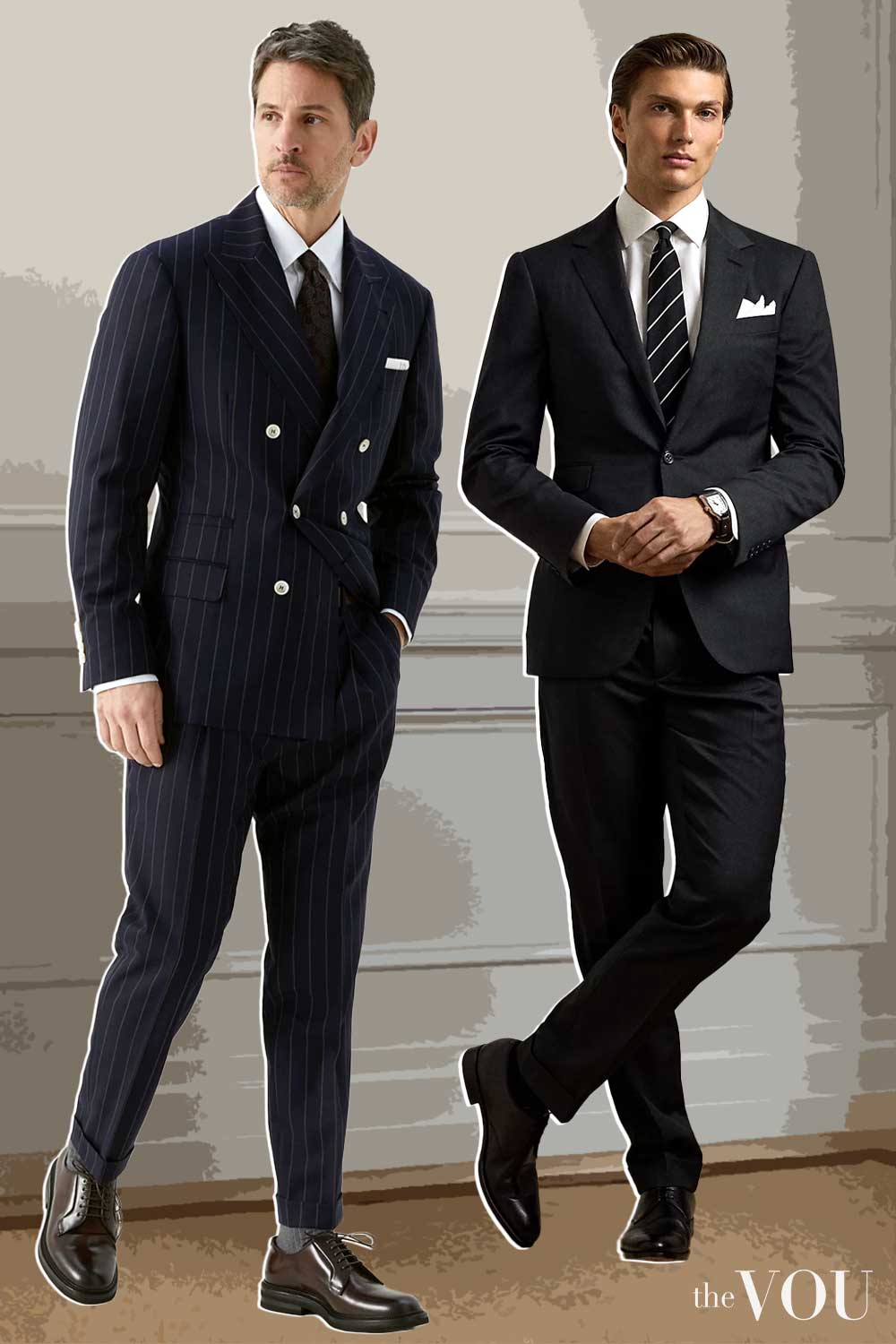
Business formal attire, often called ‘boardroom attire’, emerged in the early 20th century as the de facto uniform for professional environments.
Business formal attire evolved from ornate Victorian-era clothing adapted to the needs of the modern workplace while maintaining an air of authority and competence.
| Garment | Description | Styling Tips |
|---|---|---|
| Suit | Dark colours (navy, charcoal, black) | Single or double-breasted, wool or wool blend |
| Shirt | White or light colours | Cotton, French cuff or barrel cuff |
| Tie | Silk | Conservative patterns or solid colours |
| Shoes | Black or dark brown Oxfords | Leather, highly polished |
| Belt | Leather | Matching shoe colour |
| Accessories | Pocket square, watch | Subtle and understated |
Business Formal Outfit Idea
Begin with a bespoke single-breasted suit in charcoal grey Super 150s wool.
For a modern silhouette, the jacket should feature a notched lapel, two-button closure, and side vents.
Pair it with flat-front trousers, finished with a slight break at the shoe and a white cotton twill shirt with a semi-spread collar and double cuffs.
Select cufflinks in brushed platinum for a subtle gleam. Your tie should be rich burgundy grenadine silk tied in a symmetrical half-Windsor knot.
On your feet, opt for black cap-toe Oxfords in box calf leather, meticulously polished to a mirror shine. Match these with a black leather belt, its buckle in brushed silver.
Accessories should be minimal but impactful. A white linen pocket square in a TV fold adds a touch of refinement.
A classic dress watch with a black leather strap and silver case strikes the perfect balance between functionality and style on your wrist.
This ensemble projects the image of a seasoned executive—authoritative yet approachable, traditional yet cognizant of modern style. It commands respect in any boardroom, from London to New York.
Business Casual Code – Professional Versatility
The business casual dress code emerged in the 1990s as companies relaxed their dress codes, particularly in the tech industry.
This style bridges the gap between formal and business casual attire, offering comfort without sacrificing the professional look.
| Garment | Description | Styling Tips |
|---|---|---|
| Jacket | Blazer or sports coat | Navy, grey, or earth tones |
| Trousers | Chinos or wool slacks | Coordinating with jacket |
| Shirt | Button-down or dress shirt | Solid colours or subtle patterns |
| Shoes | Loafers, brogues, or derbies | Leather, polished |
| Optional | Tie, pocket square | Adds formality if needed |
| Accessories | Belt, watch | Coordinated with outfit |
Business Casual Outfit Idea
Start with a tailored navy hopsack blazer – the texture adds depth to your look. Opt for a soft shoulder and patch pockets for a more relaxed feel.
Pair this with sand-coloured cotton chinos – slim (but not skinny) – to create a streamlined silhouette. The trousers should have a slight taper and little to no break, showcasing your footwear.
For your shirt, choose a light blue Oxford cloth button-down in a texture that complements the blazer while the collar adds structure to the look. Leave the top button undone for a more approachable air.
On your feet, brown suede penny loafers strike the perfect balance between casual and refined. Pair these with navy over-the-calf socks to ensure no skin shows when seated.
Accessories can add personality to this versatile base. A woven leather belt in a matching brown colour ties the outfit together.
Consider a pocket square in a muted paisley pattern, casually stuffed into the breast pocket for an air of sprezzatura.
Finish the look with a leather-strapped watch featuring a navy face, echoing the colours of your blazer and socks.
This ensemble projects an image of a professional who’s equally at ease in a client meeting or at a trendy workplace, marrying timeless style with contemporary flair.
Smart Casual Dress Code – Refined Relaxation
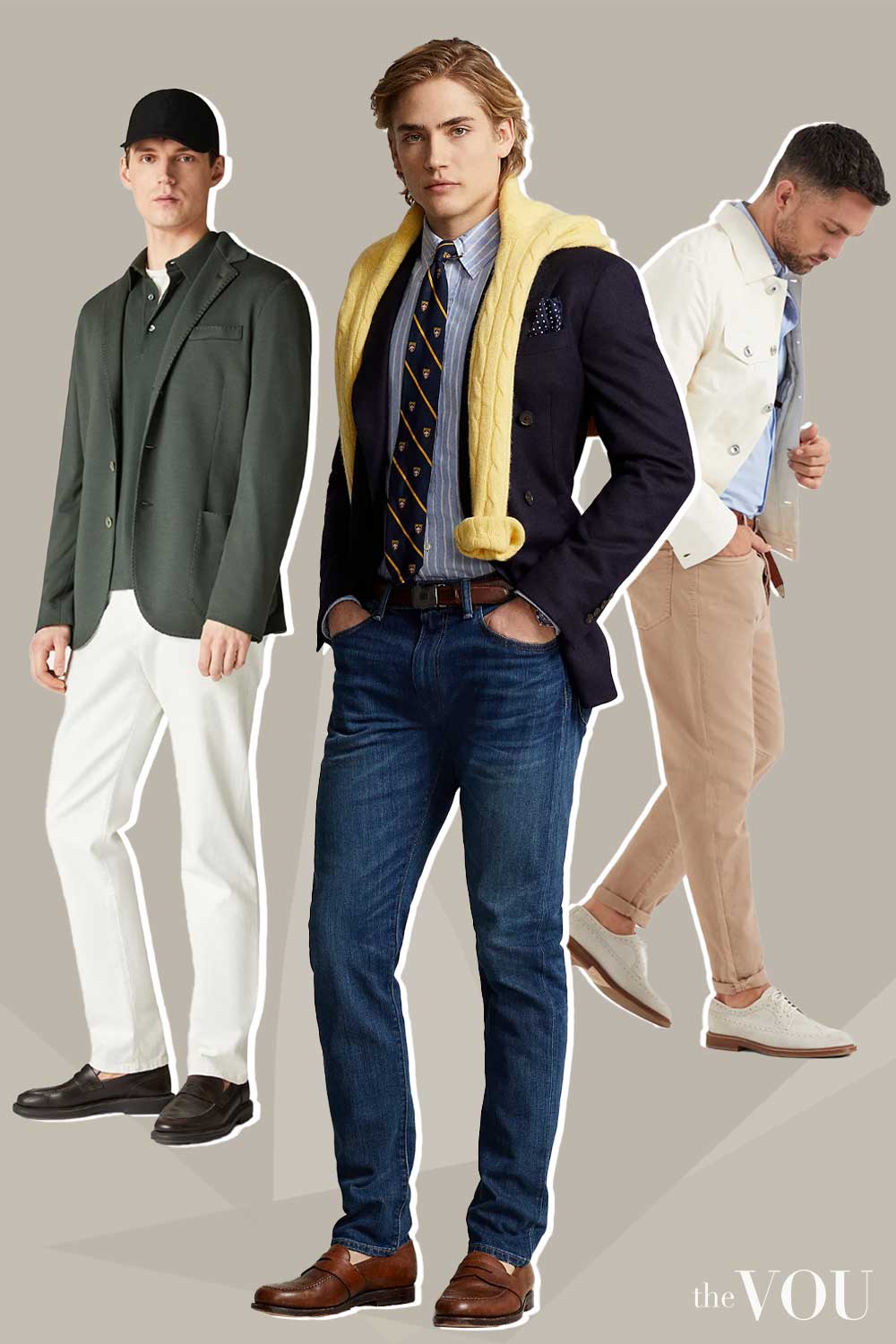
Smart casual emerged in the late 20th century as a response to the increasing informality of social and professional settings.
It bridges the gap between business casual and purely casual wear, offering a perfect blend of comfort and sophistication.
This dress code allows for more personal expression while maintaining a polished appearance.
| Garment | Description | Styling Tips |
|---|---|---|
| Jacket | Sports coat or blazer | Textured fabrics, relaxed fit |
| Trousers | Chinos, wool trousers, dark jeans | Well-fitted, no distressing |
| Shirt | Button-down, polo, fine knit sweater | Collared preferred |
| Shoes | Loafers, brogues, clean sneakers | Leather or suede |
| Accessories | Belt, watch, pocket square | Coordinated but not matching |
| Optional | Tie, scarf | For added flair |
Smart Casual Outfit Idea
Begin with an unstructured blazer in tobacco brown Italian linen. Its soft shoulders and patch pockets lend a relaxed air, while the fabric’s natural wrinkles add character.
Pair this with slim-fit indigo jeans in a dark wash. Opt for a pair with minimal distressing and a slight crop to showcase your footwear. The denim’s richness complements the earthy tones of the blazer.
Underneath, layer a fine-gauge merino wool polo shirt in a muted sage green. Its collar adds structure, while the knit texture introduces a subtle pattern to the outfit.
On your feet, brown suede chukka boots strike the perfect balance between casual and refined. Their ankle height harmonises with the cropped jeans, creating a cohesive silhouette.
Accessories should be minimal but impactful. A braided leather belt in a mix of brown tones ties the upper and lower halves together. A vintage-inspired watch with a tan leather strap and cream dial adds a touch of nostalgia.
Finally, tuck a patterned pocket square in earthy tones into your blazer’s breast pocket, allowing a hint of fabric to peek out.
This ensemble projects an image of a worldly individual equally at ease discussing Picasso or enjoying a craft cocktail, embodying the essence of smart casual style.
Casual Dress Code – Comfortable Style
Casual wear, as we know it today, dates back to the mid-20th century, when it evolved from workwear and leisure clothing.
It represents the most relaxed dress code, prioritising comfort and personal style. However, casual wear can be stylish and put-together even in its relaxed informality.
| Garment | Description | Styling Tips |
|---|---|---|
| Top | T-shirt, polo, casual button-down | Well-fitted, clean |
| Bottom | Jeans, chinos, shorts | Appropriate length, no rips |
| Outerwear | Denim jacket, bomber, sweater | Weather-appropriate |
| Shoes | Sneakers, boat shoes, desert boots | Clean and maintained |
| Accessories | Watch, sunglasses | Functional and stylish |
Casual Outfit Idea
Start with a well-fitted crew neck t-shirt in heather grey cotton. Its simplicity serves as a versatile base for the rest of the outfit.
Layer this with a light-wash denim jacket. Opt for a classic fit with a slightly worn-in look, suggesting comfort and character. The light blue denim contrasts nicely with the grey tee, adding depth to the outfit.
For the lower half, choose olive green chino shorts cut just above the knee. The colour complements the denim and the grey tee, and the length keeps you cool without veering into overly casual territory.
On your feet, opt for a pair of classic white leather low-top sneakers. Their clean lines and versatile colour work well with the rest of the outfit, suitable for walking city streets or sitting down for a casual lunch.
Accessorise thoughtfully with a minimalist watch featuring a black face and tan leather strap. Add a pair of tortoiseshell wayfarer sunglasses for both style and sun protection.
Finally, consider a canvas and leather backpack in navy and brown. It’s practical for carrying essentials while exploring, and its classic design complements the overall aesthetic.
This ensemble perfectly balances comfort and style, ideal for the man who appreciates casual wear but never lets his standards slip.
It’s an outfit that says you’re relaxed but still mindful of your appearance – the hallmark of true casual style.
Resort Attire Dress Code – Vacation Style
Resort attire, also known as resort casual, emerged in the mid-20th century with the rise of luxury vacation destinations.
It combines the relaxed nature of vacation wear with a touch of elegance, suitable for upscale resorts, cruise ships, and country clubs.
This dress code emphasizes lightweight, breathable fabrics and a colour palette inspired by tropical locales.
| Garment | Description | Styling Tips |
|---|---|---|
| Shirt | Linen shirts, polo shirts | Light colours, breathable fabrics |
| Trousers | Linen trousers, tailored shorts | Lighter shades, relaxed fit |
| Jacket | Linen blazer, light cotton jacket | Optional, for evening wear |
| Shoes | Loafers, boat shoes, espadrilles | No socks or hidden socks |
| Accessories | Panama hat, sunglasses, light scarf | Sun protection and style |
Resort Attire Outfit Idea
Begin with a stone-coloured linen shirt, its natural creases adding character. Opt for a band collar for a modern touch, and roll the sleeves to just below the elbow for a carefree air.
Pair this with tailored Bermuda shorts in a soft shade of azure blue. The contrast between the neutral top and the vibrant bottom captures the essence of the seaside style.
Ensure the shorts hit just above the knee for a flattering and appropriate length for upscale resort settings.
On your feet, slip into hand-stitched leather loafers in a rich tobacco brown. Their slip-on style is practical for beachside living, while the quality of the leather keeps the look elevated. Forgo socks for true resort style, or opt for invisible socks.
Accessorise thoughtfully with a Panama hat, its cream colour complementing the linen shirt. Choose a hat with a darker band that echoes the colour of your loafers for subtle coordination. Add a pair of tortoiseshell sunglasses with blue-tinted lenses, their colour mirroring your shorts.
As the evening approaches, drape a fine-gauge linen sweater in oatmeal over your shoulders. This adds a layer of sophistication and warmth for cooler evening breezes.
Finally, a woven leather bracelet in shades of blue and brown ties the entire look together, its artisanal quality reflecting the craftsmanship of luxury resort wear.
This ensemble captures the essence of resort attire – relaxed yet refined, casual yet considered, ready for whatever your vacation might bring.
Beach Formal Dress Code – Seaside Sophistication
Beach formal is a relatively new dress code that has emerged with the increasing popularity of destination weddings.
It bridges the gap between the casual nature of beach attire and the formality required for significant events.
This dress code calls for elegant attire appropriate for a formal occasion yet adapted for a beach setting.
| Garment | Description | Styling Tips |
|---|---|---|
| Suit | Linen or lightweight cotton | Light colours (beige, light grey) |
| Shirt | Light cotton or linen | White or pastel colours |
| Trousers | Matching suit trousers or chinos | Well-pressed, no shorts |
| Shoes | Leather loafers or boat shoes | No sandals |
| Accessories | Pocket square, boutonnière | Tropical flowers for boutonnière |
Beach Formal Outfit Idea
Begin with a suit in soft khaki Irish linen. The jacket should be half-lined for breathability, with a 3-roll-2 button stance and patch pockets for a relaxed yet refined silhouette.
Underneath, opt for a dress shirt in a pale blue cotton-linen blend. Its subtle texture and cool hue complement the suit while echoing the colours of the sea and sky. Leave the top button undone and forgo a tie for a look that’s formal yet fitting for the beach setting.
The trousers should match the jacket, cut with a slight taper and finished with a 5cm turn-up. This detail adds a sartorial flair and helps prevent the hems from dragging in the sand.
Wear hand-burnished leather loafers in a rich, medium brown. The slip-on style is practical for navigating sandy terrain, while the quality of the leather keeps the look elevated. Consider applying a water-resistant spray to protect against splashes.
Accessorise with a white linen pocket square with hand-rolled edges adds a crisp accent to the jacket. For a boutonnière, select a single frangipani flower—its delicate form and subtle fragrance encapsulate beach elegance to perfection.
Complete the look with tortoiseshell sunglasses featuring polarised lenses – they’ll protect your eyes from glare while adding a classic touch.
A Panama hat is a stylish addition to outdoor ceremonies, providing sun protection and sartorial flair.
This ensemble respects the event’s significance while embracing the natural beauty of the seaside setting. It ensures you look appropriate, whether exchanging vows on the sand or toasting the happy couple at a seaside reception.
Conclusion
Mastering the nuances of dress codes is an art form that combines respect for tradition with personal style.
From the pinnacle of formality in white tie to the relaxed elegance of beach formal, each dress code offers an opportunity to express yourself while adhering to social expectations.
Remember, the key to successfully navigating dress codes lies in following rules and understanding the spirit behind them.
A well-dressed man doesn’t simply wear clothes—he wears confidence, respect for the occasion, and a keen sense of decency.
As you apply these guidelines to your wardrobe, don’t be afraid to inject elements of your style.
The most memorable outfits often come from those who understand the rules well enough to bend them ever so slightly.
Ultimately, dressing well is all about feeling confident, respecting your hosts and fellow guests, and presenting the best version of yourself to the world.
Master these dress codes, and you’ll be prepared for any occasion, from formal affairs to casual gatherings.

